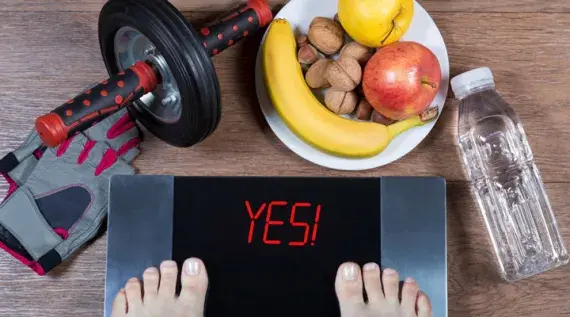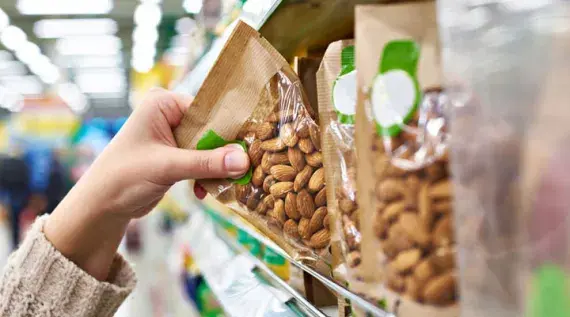“I didn’t mean to gain weight. It happened by snaccident!”
We’ve all been there. After a long day at work or with the kids, you don’t have time to eat a true meal. You get home and BAM! You’re suddenly ravenous and eating everything in your fridge and pantry.
While this occasional snack attack may not cause noticeable changes in your waistline, over time it could become an unhealthy habit that works against your weight loss goals.
Snacking between meals doesn’t have to be a negative thing. We typically think of the carb-heavy options like crackers, cookies, or chips that are popular among the American diet and are loaded with added sodium, sugar and fats. But the truth is that healthy snacking is actually an important part of daily meals.
I like to tell my clients that snacks are the bridges between your three main meals. They help fill the long gaps to make you feel more satisfied throughout the day and prevent against the dreaded starvation feeling that causes you to overeat. You don't have to be chronically hungry to lose weight or even maintain a healthy weight. Try my top five tips for healthy snacking that'll keep those wellness goals front and center.
1. Eat every 3-4 hours.
People often look at me a little funny when I tell them that they may need to eat more for weight loss. It’s counter-intuitive! Most of my clients are skipping meals or not eating enough in an effort to decrease their total calorie intake. This may work over a short period of time, but at some point, the body will demand the energy it needs, which usually leads to overeating.
Another important reason to eat more consistently during the day is that the body uses food for energy and converts it into fuel for your brain functioning. When you don’t provide your body with proper energy, your blood sugar drops and your thinking becomes cloudy. This is when you may begin to feel “hangry.” You’re irritable, emotional, and grumpy! Once you’re in this mode, it’s hard to make smart choices when it comes to food. To avoid this, try and eat every 3-4 hours to keep your blood sugar stable and your metabolism burning at a steady rate.
2. Mix your nutrients wisely.
As I mentioned, the typical American version of snacks involves carbohydrate-loaded options that aren’t the best choice. While they may be satisfying at first, a snack that only has carbohydrates will leave you feeling hungry soon after consumption. You may be asking yourself, “Why does this keep happening?” Carbohydrates are the body’s main source of fuel. The body is able to quickly break down and digest these nutrients, causing our blood sugar to rapidly increase and then drop again leading to hunger.
To avoid this, you want to combine macronutrients (protein, fats, and carbohydrates) with each snack. Fats and protein are denser nutrients that take the body longer to break down. When combined with a carbohydrate, they help blood sugar stay stable and keep you feeling fuller, longer.
Try eating a handful of nuts (protein and fat) with an apple or grapes (carbohydrate), some whole-grain crackers with cheese or peanut butter, or a baggie of veggie sticks with hummus. The options are endless when it comes to creating the perfect snack!
3. Practice mindfulness.
Research continues to grow on the importance of mindful eating. This means putting down your phone, turning off the TV and taking a break from work to avoid distractions. Pressing pause for a couple minutes to enjoy a snack will allow you to feel more satisfied and keep appropriate amounts in check. This brings up another big part of practicing mindfulness, which is to make sure you are eating the right portions. Look for single servings of yogurt, nuts, or other snacks to make sure you don’t go overboard. Putting snacks into small bags or containers is a great practice to avoid the overeating that comes with grabbing snacks directly out of a multiple-serving bag.
One other part of mindfulness is making the distinction between snacking and “grazing.” Snacking the right way is intentional. You have a specific time of day that you are stopping to eat that helps boost energy and fuel the body. Grazing is a more casual, constant state of eating or nibbling without much thought. If this is you, it may be time to rethink your habits to make sure you aren’t stacking up excessive calories without realizing it!
4. Always think ahead.
Planning is key when it comes to healthy snacking habits. I remember one client I worked with who was always on the go. She would often find herself hungry and without healthy options close by while running errands or at soccer practice with the kids. After discussing a few ways to avoid this, she started keeping a cooler with snacks in the back of the car for both her and the kids!
Keeping nutritious, ready-to-eat supplies on hand like protein bars, nuts or nut butters, baby carrots, and crackers helps us avoid the desperate purchase of less-than-healthy fast food or vending machine options.
5. Hydration is key.
Lastly, water makes up two-thirds of your body. It is responsible for many important regulations, including healthy metabolism and proper weight management. Sometimes the body has a difficult time in differentiating between hunger and thirst. Drinking 64 ounces of water per day can help decrease your appetite, and drinking at least one glass of water before a meal can help you eat less and feel fuller. Adequate water intake also aids in bowel function to avoid bloating and constipation and alleviates fatigue to keep you feeling energized during those busy work days.
Working toward a weight loss goal?
Stay accountable and inspired with the YMCA’s Weight Loss Program. This 12-week course offers weekly small-group discussion and tools to help you design a unique plan, track progress and set yourself on the path to a healthier lifestyle. Learn More.





